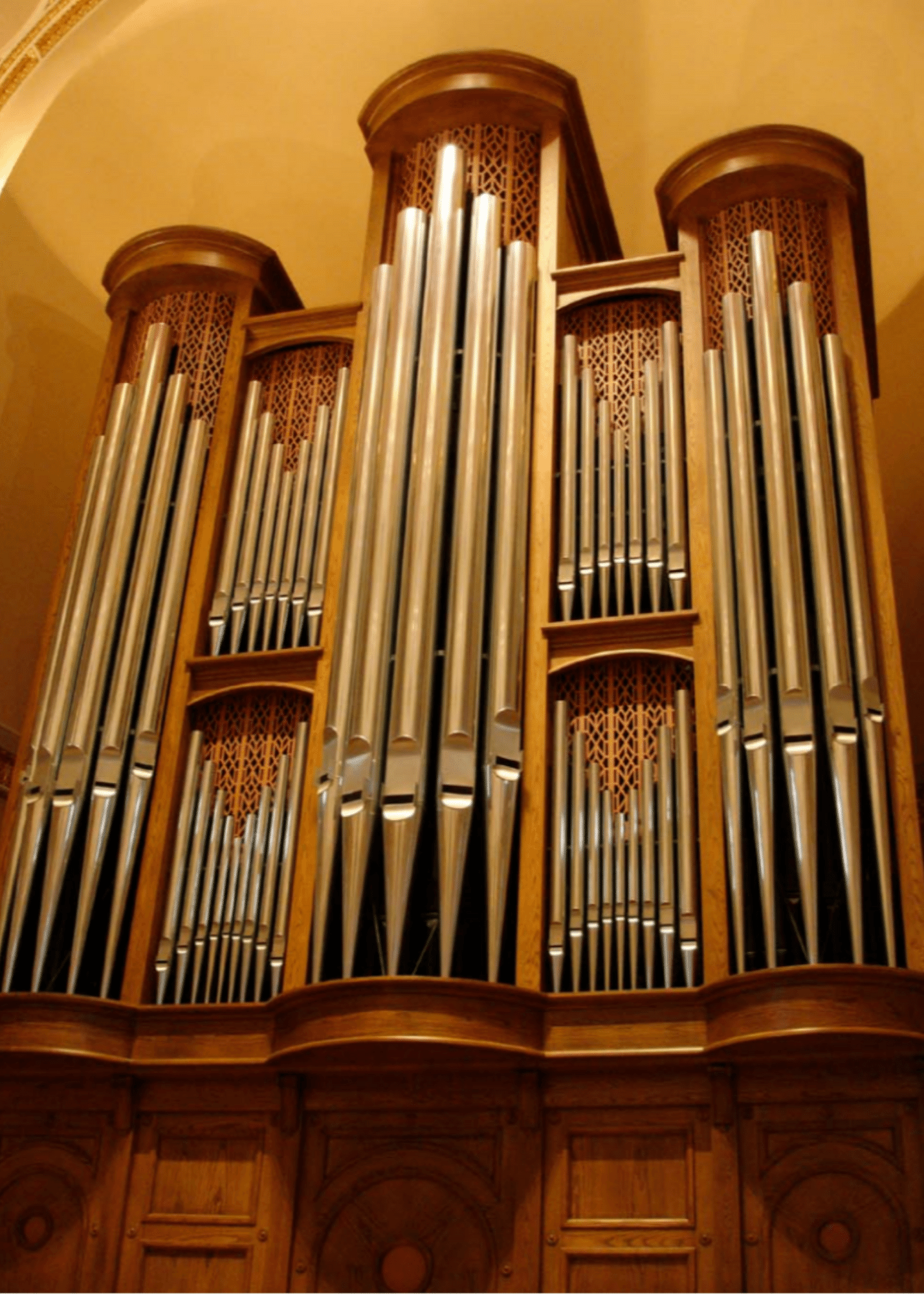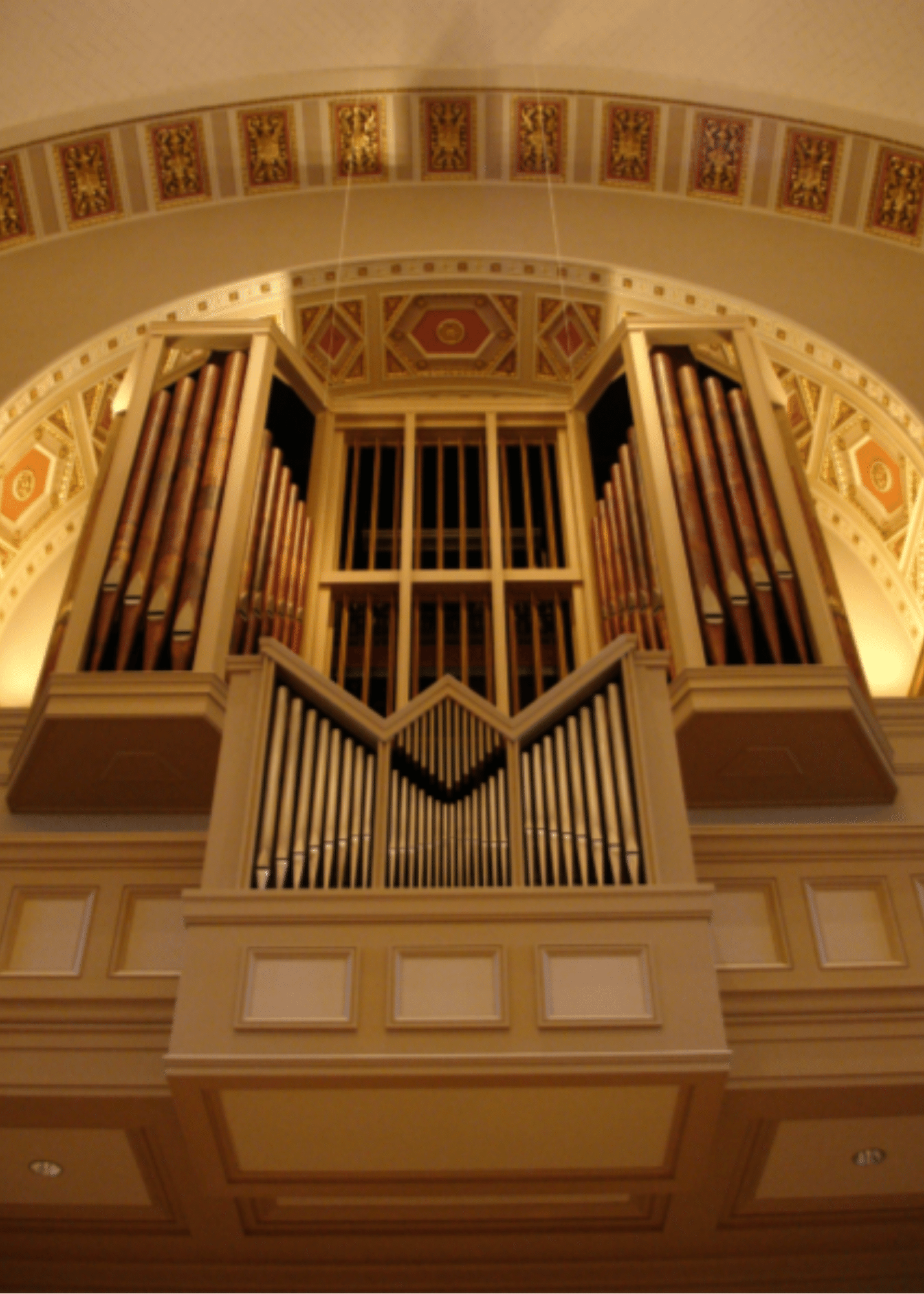The Cathedral has had 6 Pipe Organs in its over 150 years history. The first organ was built by Mathias Schwab, of Cincinnati. It was described in the book entitled "Fifty Years at Saint John's Cathedral" published by the Cathedral. The first organ was consecrated on July 31, 1853 the same date of the consecration of the Cathedral.
"The case is of black walnut. The instrument has two banks of keys, and thirty-one stops. The great organ is very full and heavy; the more delicate stops, however, are disproportionate, and lack an oily smoothness of tone; besides the combination of stops does not meet our idea of a perfect instrument of that size. It is and probably will be for many years, the most powerful instrument in this part of the country; but we venture to say that not three summers will pass away, before there will be four or five organs in this city, more harmonious in all their parts, and better adapted to the churches in which they are placed. It is to be played by Henry Hillmantel, a musician of fair talent, who has lately taken up his residence in this city."
In March, 1892, a contract for remodeling of the first organ was let to the Moline Organ Company and "under the skillful supervision of Mr. O. Marshall and Mr. N. Bach an instrument second to no other in the country was constructed and now rages" the Cathedral. The organ stood in a "commanding position" in the west gallery and stood 30 feet high. The organ was of black walnut, of classical design, noble and massive in appearance. The large facade pipes were of tin, highly polished. The action was tubular pneumatic, novel in construction. The organ had 50 speaking stops and 2,384 pipes. The stop list was published in the 50th Jubilee Book.
During the Diamond Jubilee of 1923, the family of the late Patrick Cudahy offered to donate the $20,000 necessary to fund a new organ (the second for the Cathedral) under construction. The gift was in memory of Mr. Cudahy and his daughter Helen, and was the largest individual contribution ever made to the Cathedral (at that time).
This organ was build by the Wangerin-Weickhardt plant in Milwaukee and consisted of two organs, the main organ located in the gallery over the Cathedral entrance, and the sanctuary organ in a special chamber to the left of the sanctuary. There were forty-seven speaking stops in the main chamber and seven speaking stops in the sanctuary organ with a set of cathedral chimes consisting of twenty-five tubular bells.
There were two consoles, the main organ console being of four manuals and the sanctuary organ of three manuals. The stop list noted "thirteen diapason or pure organ tone stops, seventeen flute stops of different tonal structures, eleven string tone registers and eleven reed stops, a Harp Celeste, a set of chimes, all to be operated from either of the two consoles."
This instrument was solemnly blessed by Monsignor O'Hearn at Solemn High Mass on Sunday, May 6, 1923. This instrument was destroy during the fire of 1935 which destroy the entire Cathedral building except the tower and portions of the north and south walls.
The organ installed in the restored Cathedral in 1942 was "a finely balanced instrument employing 1,183 pipes." The organ proper, located in the loft to the right above the sanctuary, was enhanced in volume and tone by the unexcelled acoustics of the new Cathedral interior. The two-manual console was placed advantageously for the organist and choir in the well-designed choir loft to the left above the sanctuary. This instrument remained until 1966.

Nichols & Simpson Organ
Noehren Organ
The current gallery organ was built by the world-renowned recitalist and teacher, Robert Noehren, and installed for the Fifth International Church Music Congress held in Milwaukee in 1966. The stop list of this instrument encompasses four-manuals/pedal, with seventy-four ranks and 3,586 pipes. Designed in the French Classical tradition, it is flexible in handling the complete range of organ literature.
In 2002, as part of the Cathedral Project, the building was reorganized. The east end (apse) of the cathedral is now the home of the music ministers. This was the space where the high altar and baldachin used to be. Adequate space is now available for the Cathedral Choir, Cantor, Instrumentalists, Piano and Organ Console. Additional seating for the congregation is placed on the stairs preceding this space in overflow situations. In this space a new organ was constructed by the Nichols & Simpson Company of Little Rock, Arkansas. The console in the east end controls both organs. This console is 7 feet wide and has four manuals (or keyboards). The original console in the gallery is still operational and only controls the gallery organ.
Upon completion the of the apse organ (stop list), the two instruments will comprise of 111 ranks of pipes. For the 2002 renovation, the pipes of the Noehren organ were removed, washed and replaced. The casework has been painted to reflect the new color scheme in the cathedral. The blower was replaced just prior to the rededication. The apse organ debuted on Easter Sunday morning, 2005. The solo division is currently in preparation.
